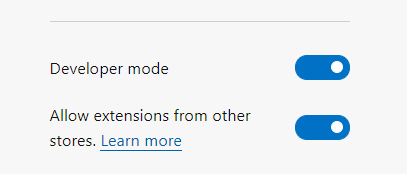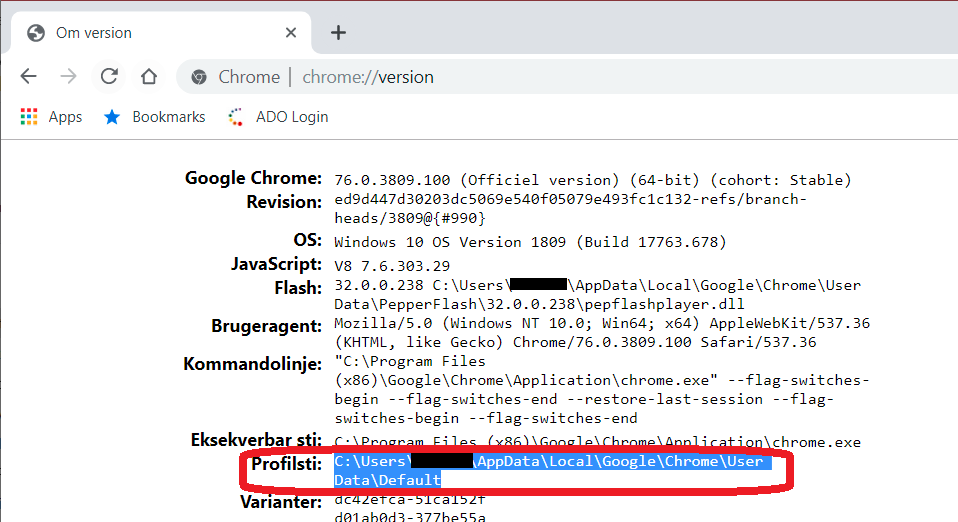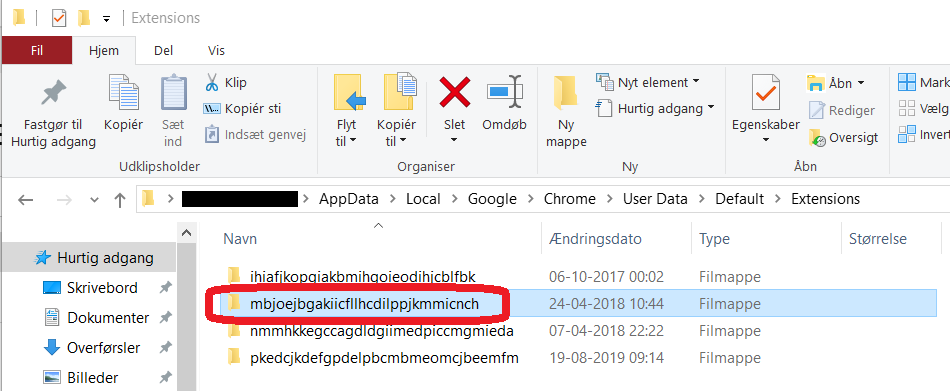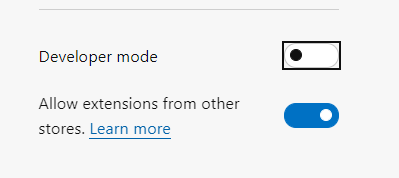If you have been managing Internet Explorer for years, perhaps your organization has provided predefined favorites to the users by populating a subfolder in the Favorites folder.
Now you are preparing to migrate to the chromium based Edge browser, and you would like to take advantage of the Group Policy setting “Configure Favorites” to prepopulate some favorites, like the users have been used to.
(In Google Chrome the same setting is called “Managed Bookmarks”)
This Group Policy setting requires a JSON formatted text string, where the favorites / bookmarks are defined.
But how do you get from a Favorites folder with one .URL file for each favorite to a JSON string, that you can insert in the Group Policy setting?
Here’s a script to automate the proces for you
How the script works is described in the Synopsis of the script, so to avoid a lot of redundant text, please read it there :)
You can run the script as is without input parameters and without changing the following variables.
In that case it will:
Read the favorites from %USERPROFILE%\Favorites ($IEFavoritesPath)
Name the Managed Favorites / Bookmarks folder in the browser “IE Favorites” ($bookmarksTopLevelName)
Output the JSON formatted text string to %USERPROFILE%\Documents\ManagedBookmarks.txt ($JSONFile)
After the file creation, simply copy the contents of the file and insert in the Group Policy setting.
Be aware of the limitation in the JSON string length
The limitation is not in the script, but in the ADMX policy and in registry.
For the same reason, the script does not traverse large hierachies, but only one level of subfolders.
The Group Policy setting simply isn’t capable of huge amounts of favorites/bookmarks.
The limit depends on the length of both the URLs and the names of the favorites / bookmarks.
If the Group Policy Editor simply doesn’t allow you to paste the string in, then you have hit the limit ;)
But please test, because I have experienced, that I’m allowed to paste in the string, but Chrome still does not show the bookmarks.
For me, the limit was somewhere between 37254 and 41099 characters in the string.
credits
I have based the part that reads data from the .URL files from a function created by Oliver Lipkau
Get-IniContent script on Technet Gallery
the script:
#requires -version 5
<#
.SYNOPSIS
Script to convert Internet Explorer's Favorites folder to
a JSON formatted text file, that can be used in the Group Policy Setting
"Managed Bookmarks" (Google Chrome) or
"Configure Favorites" (Microsoft Edge)
.DESCRIPTION
The Managed Bookmarks and Configure Favorites Group Policy settings for Chrome and Edge
can define a set of bookmarks/favorites, that are always forced to the browser's Bookmarks/Favorites.
If you have already predefined favorites in Internet Explorer, this script will help you convert that
to the string, you need to enter in the Group Policy Setting.
The script reads the .URL files in the specified folder and converts the name and URL for each
to one JSON formatted string.
It can also read subfolders (one sublevel only)
*** Note! Don't add too many favorites, because of registry limits!
*** The Group Policy Editor UI will not allow to paste a too long string
*** For me the limit was somewhere between 37254 and 41099 characters, although the ADMX specifies maxLength to 1000000
.INPUTS
None. (Define variables below instead)
.OUTPUTS
Outputs to JSON formatted text file. Path defined in variable below.
.NOTES
Version: 1.0
Author: Martin Jeppesen, https://www.avantia.dk
Creation Date: 2020-05-13
Purpose/Change: Initial script development
#>
#----------------------------------------------------------[Declarations]----------------------------------------------------------
$UserProfile = $env:USERPROFILE
# Enter the name of the Managed Bookmarks/Favorites, as they should be named in the browser
$bookmarksTopLevelName = "IE Favorites"
# Enter the path with the favorites stored as .URL files to be converted to Edge/Chrome JSON file
$IEFavoritesPath = "$UserProfile\Favorites"
# Enter the path to the text file, where you want the script to store the JSON formatted string
$JSONFile = "$UserProfile\Documents\ManagedBookmarks.txt"
#-----------------------------------------------------------[Functions]------------------------------------------------------------
# Function to get content from the URL files is based on
# the function made by Oliver Lipkau <oliver@lipkau.net>
# https://gallery.technet.microsoft.com/scriptcenter/ea40c1ef-c856-434b-b8fb-ebd7a76e8d91
# It gets the content of an INI file and returns it as a hashtable
function Get-IniContent ($filePath)
{
$ini = @{}
switch -regex -file $FilePath
{
"^\[(.+)\]" # Section
{
$section = $matches[1]
$ini[$section] = @{}
$CommentCount = 0
}
"^(;.*)$" # Comment
{
$value = $matches[1]
$CommentCount = $CommentCount + 1
$name = "Comment" + $CommentCount
$ini[$section][$name] = $value
}
"(.+?)\s*=(.*)" # Key
{
$name,$value = $matches[1..2]
$ini[$section][$name] = $value
}
}
return $ini
}
# Function to get the name and URL for each favorite/bookmark
function Get-BookmarksList ($files)
{
$list = foreach ($item in $files)
{
try
{
# Get the name based on the .URL filename
$BookmarkName = $item.Name.TrimEnd(".url")
# Read the URL from the file content using the Get-IniContent function
$iniContent = Get-IniContent $item.FullName
$BookmarkURL = $iniContent["InternetShortcut"]["URL"]
}
catch
{
$BookmarkName = $item.FullName
$BookmarkURL = $null
}
[PSCustomObject]@{
url = $BookmarkURL
name = $BookmarkName
}
}
return $list
}
#-----------------------------------------------------------[Execution]------------------------------------------------------------
#Create the json file using info on the name of the Managed Bookmarks
$jsonTLNamePrefix = '[{"toplevel_name": "'
$jsonTLNameSuffix = '"},'
$jsonTLNameFull = $jsonTLNamePrefix + $bookmarksTopLevelName + $jsonTLNameSuffix
New-Item $JSONFile -ItemType File -Value $jsonTLNameFull
#Enumerate IE Favorites folders in one level only
$folders = Get-ChildItem $IEFavoritesPath -Recurse -Depth 1 | ?{ $_.PSIsContainer }
#Create Folders in Bookmarks and create bookmarks in these folders
foreach ($folder in $folders)
{
# Get the name for the folder as it will be displayed in the browser based on file folder name
$folderName = $folder.Name
# Get each .URL file from the subfolder
$folderPath = $folder.FullName + "\*.url"
$folderURLFiles = Get-ChildItem $folderpath
# Get the URLs and names of the favorites using the Get-BookmarksList function
$folderBookmarksList = Get-BookmarksList ($folderURLFiles)
# Create the JSON formatting for the subfolder
$folderJSONStart1 = '{"name": "'
$folderJSONStart2 = '", "children":'
$folderJSONStart = $folderJSONStart1 + $folderName + $folderJSONStart2
$folderBookmarksJSON = $folderBookmarksList | ConvertTo-Json -Compress
$folderJSONEnd = "},"
$folderJSONcomplete = $folderJSONStart + $folderBookmarksJSON + $folderJSONEnd
# Add the JSON formatted subfolder to the text file
Add-Content $JSONFile $folderJSONcomplete -NoNewline
}
# Get the favorites in the root of the Favorites folder
$URLFiles = Get-ChildItem $IEFavoritesPath "*.url"
# Get the URLs and names of the favorites using the Get-BookmarksList function
$rootBookmarksList = Get-BookmarksList ($URLFiles)
#Convert bookmarks to json
$rootBookmarksJSON = $rootBookmarksList | ConvertTo-Json -Compress
# Remove the first [, because it already exist in the file
$rootJSONTrimmed = $rootBookmarksJSON.Trimstart("[")
# Add the favorites/bookmarks from the Favorites root folder to the JSON formatted text file
Add-Content $JSONFile $rootJSONTrimmed -NoNewline








